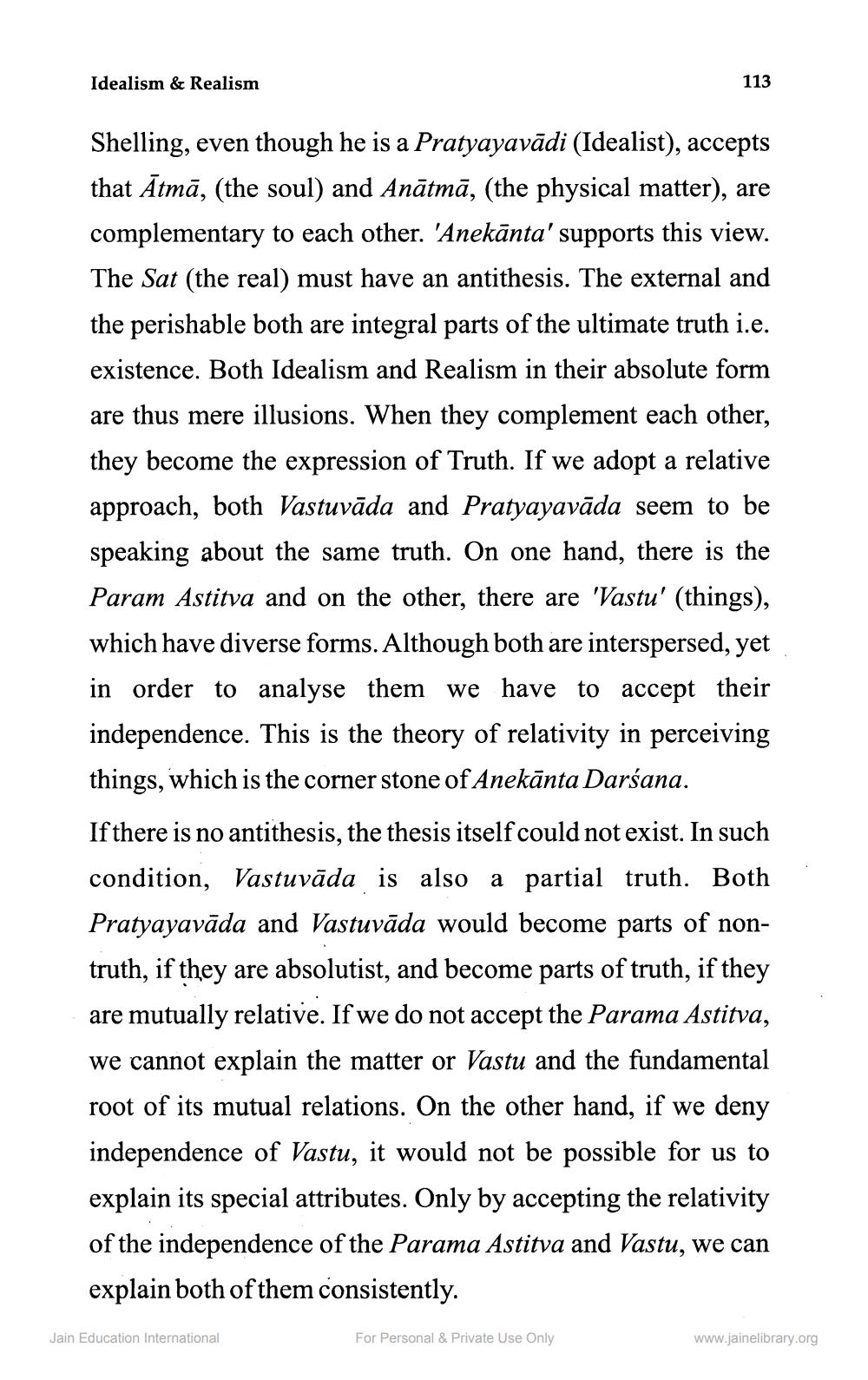________________
Idealism & Realism
113
Shelling, even though he is a Pratyayavādi (Idealist), accepts that Ātmā, (the soul) and Anātmā, (the physical matter), are complementary to each other. "Anekānta' supports this view. The Sat (the real) must have an antithesis. The external and the perishable both are integral parts of the ultimate truth i.e. existence. Both Idealism and Realism in their absolute form are thus mere illusions. When they complement each other, they become the expression of Truth. If we adopt a relative approach, both Vastuvāda and Pratyayavāda seem to be speaking about the same truth. On one hand, there is the Param Astitva and on the other, there are 'Vastu' (things), which have diverse forms. Although both are interspersed, yet in order to analyse them we have to accept their independence. This is the theory of relativity in perceiving things, which is the corner stone of Anekānta Darśana. If there is no antithesis, the thesis itself could not exist. In such condition, Vastuvāda is also a partial truth. Both Pratyayavāda and Vastuvāda would become parts of nontruth, if they are absolutist, and become parts of truth, if they are mutually relative. If we do not accept the Parama Astitva, we cannot explain the matter or Vastu and the fundamental root of its mutual relations. On the other hand, if we deny independence of Vastu, it would not be possible for us to explain its special attributes. Only by accepting the relativity of the independence of the Parama Astitva and Vastu, we can explain both of them consistently.
Jain Education International
For Personal & Private Use Only
www.jainelibrary.org




